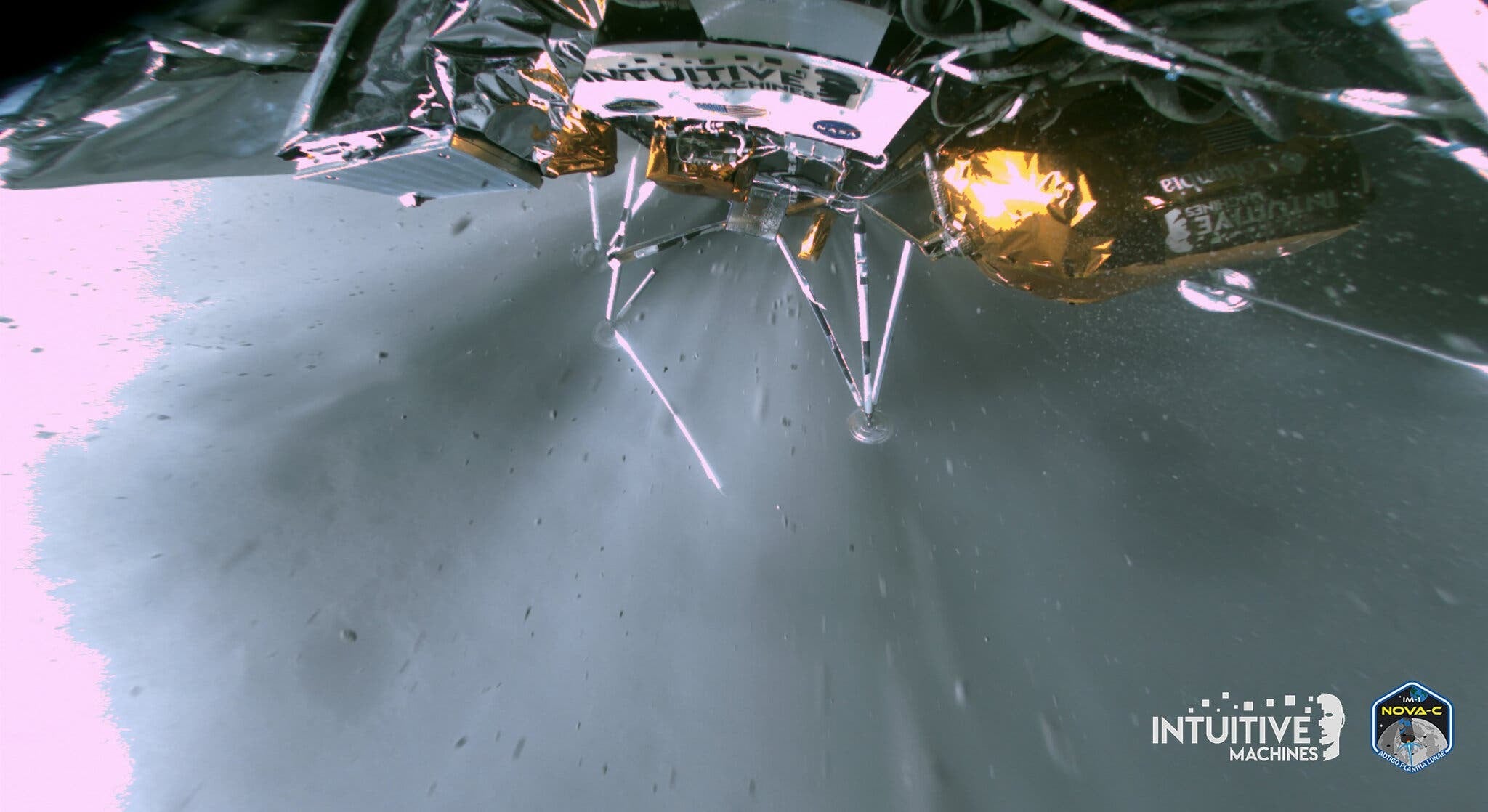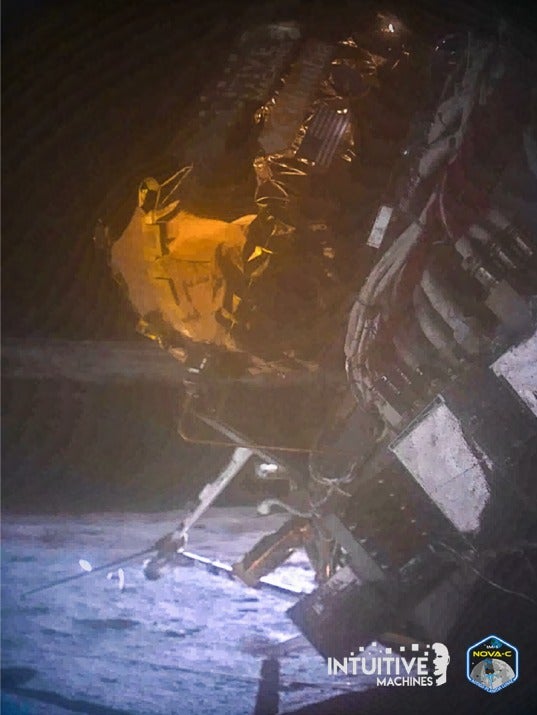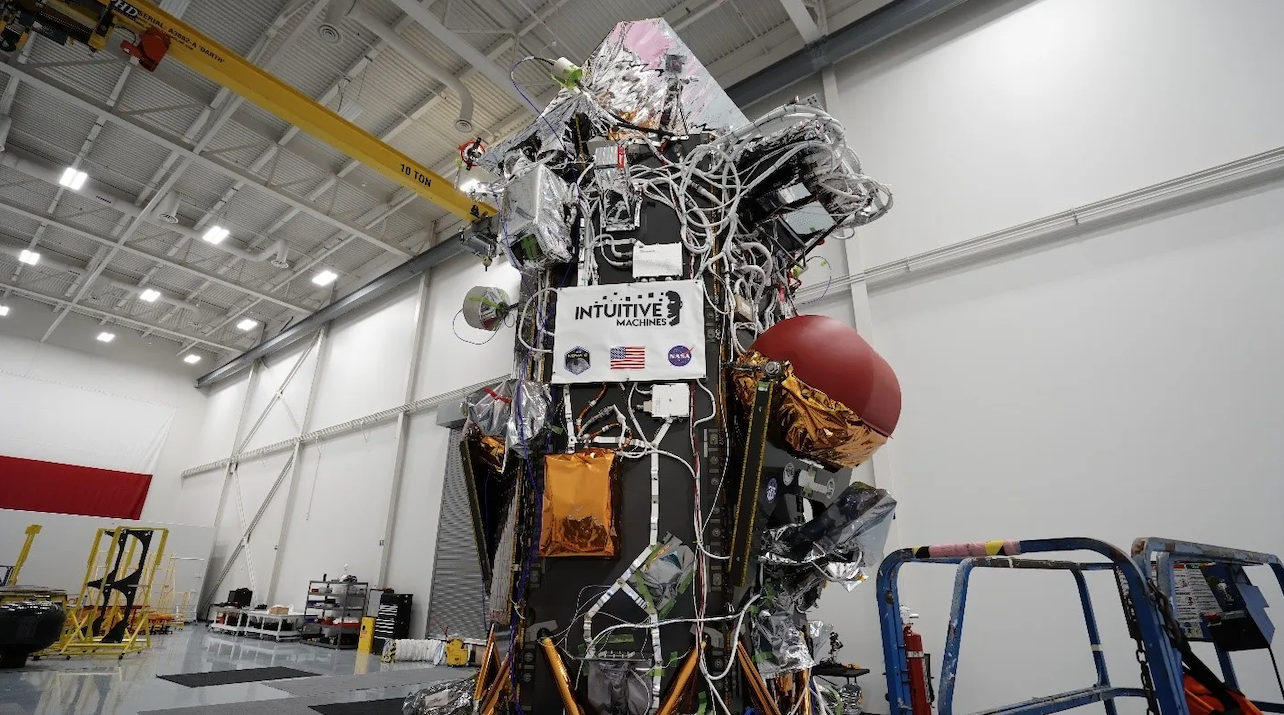
The lunar lander Odysseus, which touched down softly — if somewhat awkwardly — on the Moon last week, is alive and well. But after nearly a week of returning science data, it is running low on power and will soon be put to sleep.
“What we are going to do is tuck ‘Odie’ in for the cold night and see if we can wake him up here when we get to solar noon in about three weeks,” Steve Altemus, CEO of the craft’s builder and operator, Intuitive Machines, said during a press conference Feb. 28. Altemus’ reference to “solar noon” reflects the hope that the craft can generate more power when the Sun is high overhead and potentially resume operations.
Odysseus’ landing on Feb. 22 made it the first American-made craft to land on the Moon since 1972 and the first non-governmental craft to ever do so.
But it wasn’t a flawless landing. As Odysseus — about 14 feet (4.3 meters) tall and weighing roughly 1,488 pounds (675 kilograms) — neared the lunar surface, instead of hovering stably before touching down, it was still drifting slowly. When its feet touched down, they skidded across the Moon’s surface, snapping one of the landing gear legs. As the engine shut off, the craft gently toppled partially over, coming to rest at about a 30-degree angle from upright.
Despite the tumble, the lander was able to generate power from its solar panels, allowing all of its payloads to collect and return data. However, the awkward landing altered the mission because the craft’s solar panels could not aim directly at the Sun. The lander was scheduled to collect data for as long as 10 days but will instead go into hibernation after six days.
Landing at the lunar south pole

Odysseus carried six payloads under contract for NASA. Several were intended to collect data and test navigation and landing technology that will be used for the agency’s Artemis program, which will return astronauts to the Moon. “All of the data that can be used for Artemis will be used for Artemis,” NASA’s Sue Lederer said during the press conference.
Odysseus landed about 185 miles (300 kilometers) from the Moon’s south pole, near a crater named Malapert A. The area is part of the rugged polar highlands, the same region Artemis landings will target.
Due to a wiring error, Odysseus was forced to fly its touchdown without its built-in laser rangefinders, a key navigation instrument. Engineers delayed the landing to put together a last-minute hack, rerouting data from the laser ranging tools on one of the science payloads. However, Intuitive Machines revealed at the Feb. 28 press conference that the patch didn’t work; in the scramble, engineers missed a flag in the code to tell the navigation algorithm the data were valid.

As a result, the lander came to rest about 0.9 mile (1.5 km) outside of its intended landing zone, at a higher elevation than expected, and on a 12-degree slope within a small crater. These factors also contributed to its slightly clumsy landing.
Still, for Intuitive Machines, the fact that the craft managed to land softly using only data from its cameras and internal motion sensors is a feat in itself. “It’s the first time anybody’s flown this algorithm, and it exceeded expectations because we live to tell about it,” said Tim Crain, the company’s chief technology officer.
Science and technology demonstrations
The NASA payloads included a variety of tests and demonstrations, including landing technologies (involved in the failed laser rangefinder patch), tracking the lander’s fuel in zero gravity, and other navigation and communication tools.
One instrument was designed to observe how the landing engine exhaust interacts with the lunar surface and its sharp, abrasive dust. Unfortunately, a hardware failure prevented it from collecting data during the descent and landing, but controllers were able to fix this later and make observations from the landing site.

In another spaceflight first, Odysseus’ engine runs on a mixture of liquid methane and liquid oxygen. These propellants must be stored at very low temperatures, as even in space, heat from the Sun or spacecraft exhaust can cause it to boil off. Such cryogenic fuels are expected to play a key long-term role in the Artemis program.
The lunar lander also brought a payload to study radio emissions from objects like the Sun, Jupiter, and Earth. This is an early first step toward a long-held dream of astronomers — placing a radio telescope on the Moon’s farside, shielded from interference from Earth.
The delivery of the instruments is the second mission of NASA’s Commercial Lunar Payload Services (CLPS) initiative, which contracts commercial companies to deliver tools and technology to the Moon. The first CLPS mission, the Peregrine lander built by U.S. company Astrobiotic, failed to reach the Moon and burned up in Earth’s atmosphere last month.










